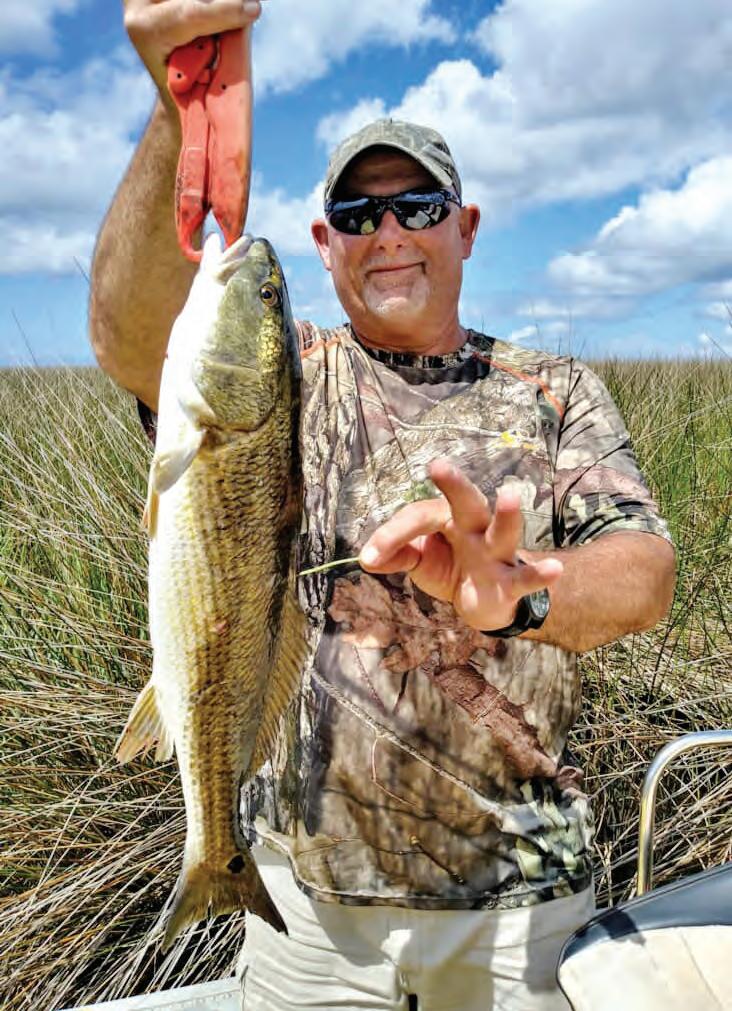
1 minute read
Local Waterways Provide Ideal Habitat for Fish and Birds
community of creatures that gamefish need. They are also important habitats for some of Florida’s most iconic bird species.
Along the mangrove shoreline is a great place to forage at low tide if you’re a Roseate Spoonbill. These bright pink birds sweep their slightly open, flattened bills through shallow muddy water looking for aquatic insects, shrimp, and small fish like killifish and sheepshead minnows.
At high tide, an oyster reef is a busy place. Oysters open to filter feed on nutrients while the nooks and crannies between the shells come alive with crabs, worms, and other invertebrate animals that form a buffet for redfish and other aquatic predators. When the tide begins dropping, before the oysters close, another predator arrives by air: American Oystercatchers. These birds use their blade-shaped bills to pry open oysters and other critters.
On a sunny, summer morning, a light breeze adds ripples to the water’s surface while gentle waves lap the shoreline. It’s low tide: the water is dark and shallow. A flats boat glides slowly across the bay, heading out toward the Gulf of Mexico. Suddenly, a flurry of action: the line gets tight, and reel sings out. Fish on!
Florida’s Southwest Gulf coast offers an amazing variety of aquatic environments, including mangrove shorelines, oyster reefs, and seagrass beds. Each of these habitats provides food and shelter for a
Seagrass beds are perhaps the most important habitat for both fish and birds. These forested meadows are the best place to live if you’re a tiny baitfish because there is plenty to eat and lots of places to hide. Where trout and snook find their meals, wading birds like Great Egrets and Little Blue Heron also like to hunt for many of the same species of bait.
It’s all about the habitat! Wading birds depend on the same habitat that gamefish use to survive and thrive. As anglers and birders, we must protect these special places and keep them free of fishing line, litter, and other debris.





By: Joe Sheaffer










